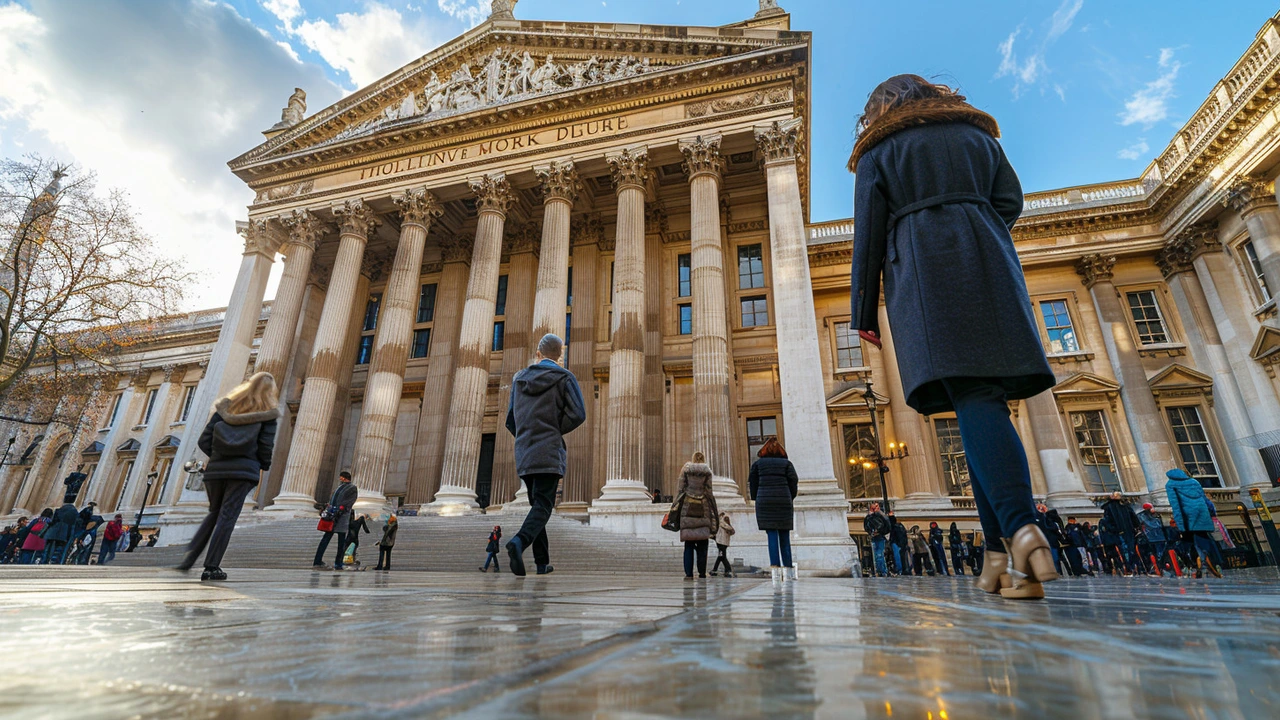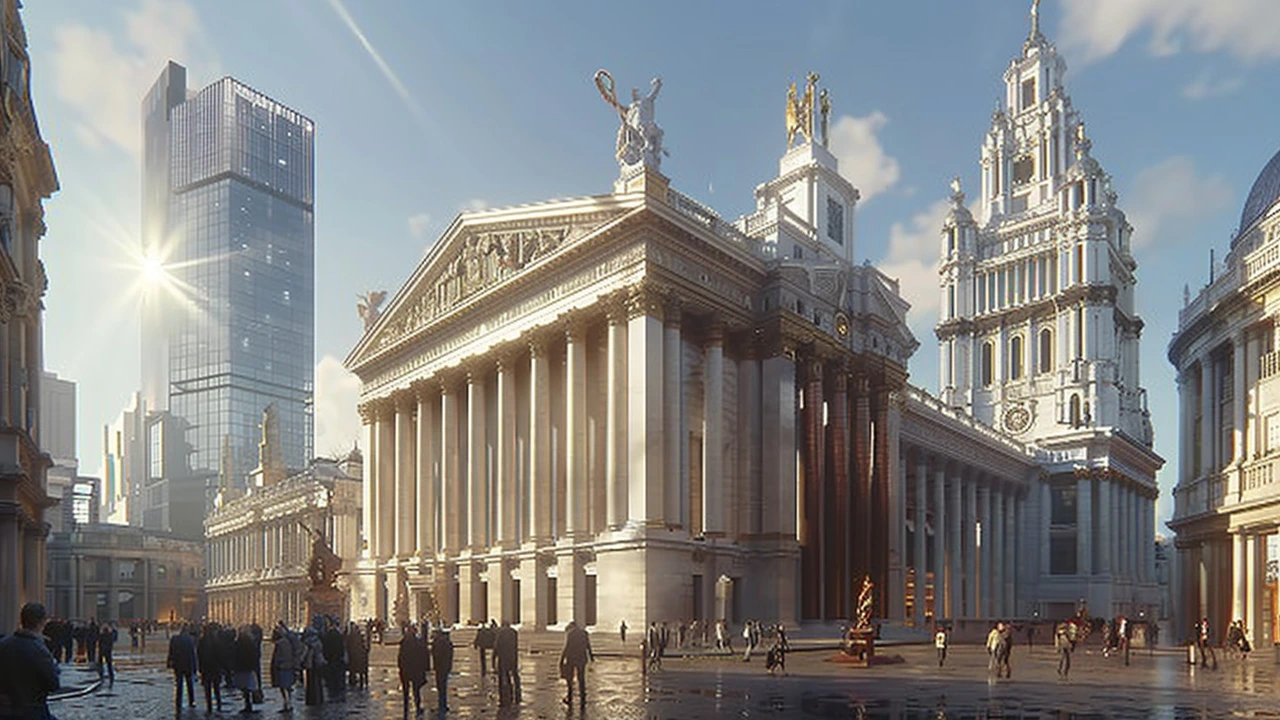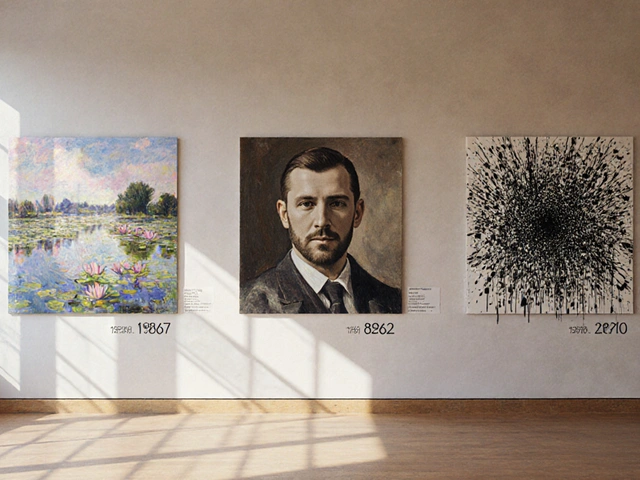Classicism never really goes out of style. This old-world charm, which has roots in ancient Greek and Roman art and culture, continues to capture our imagination and influence various aspects of our contemporary lives.
From the grandiose columns of neoclassical architecture to the refined elegance found in modern fashion, classicism endures in many forms. It’s fascinating to see how these ancient influences have seamlessly woven their way into the fabric of our daily design sensibilities.
Beyond just aesthetics, classicism offers a bridge to our cultural heritage. It's as if relishing the beauty of classical elements evokes a sense of continuity and connection to the past. This timeless appeal is not just for history buffs; it resonates with anyone who appreciates beauty, balance, and harmony in design.
As we delve into various facets of classical influence, be prepared to discover how you too can infuse those enduring elements into your modern life. Whether through art, architecture, or even your personal style, classicism remains a wellspring of inspiration.
- The Historical Roots of Classicism
- Classical Art and its Influence Today
- The Impact of Classicism on Modern Design
- Integrating Classical Elements into Contemporary Fashion
- Why Classicism Remains Relevant
The Historical Roots of Classicism
Classicism finds its origins in the ancient civilizations of Greece and Rome, where art, architecture, and philosophy formed the bedrock of what many still consider unparalleled cultural achievements. The term itself comes from the Latin word 'classicus,' meaning 'of the highest class,' setting the stage for its enduring association with excellence and elegance.
In ancient Greece, the Classical period (circa 5th to 4th century BCE) saw the rise of philosophies from giants like Socrates, Plato, and Aristotle. It was a time when democratic principles flourished in city-states like Athens, influencing government and civic life. Greek artists and sculptors, such as Phidias and Polykleitos, sought to portray the human form in its most ideal and harmonious proportions. Phidias, for example, was known for his work on the Parthenon, which remains an iconic symbol of classical architecture.
Meanwhile, in Rome, the adoption and adaptation of Greek culture contributed significantly to the Roman Empire's grandeur. The Romans expanded on Greek architectural orders, such as Doric, Ionic, and Corinthian, applying them to a range of public buildings, temples, and monuments. Structures like the Colosseum and Pantheon still stand as testaments to their innovative engineering and architectural prowess. Roman art and literature, with figures like Virgil and Horace, further propagated the themes of order, symmetry, and rationality.
The Renaissance period, occurring roughly a millennium after the fall of Rome, marked a revival of classical learning and aesthetics. Italian cities like Florence and Rome became hubs of renewed interest in the philosophies, art, and architecture of antiquity. Artists like Leonardo da Vinci and Michelangelo drew inspiration from ancient texts and ruins, once again emphasizing balance, harmony, and humanism. Michelangelo's David, carved from marble, embodies the idealized human form much like the statues of ancient Greece.
In the subsequent centuries, the Neoclassical movement of the 18th and early 19th centuries sought to recapture the simplicity and beauty of classical art and architecture as a reaction against the ornateness of the Baroque and Rococo styles. Symbols of this movement, such as the British Museum in London and the United States Capitol Building in Washington D.C., are alive with references to classical orders and symmetry.
"The aim of Classical Art is to reach through the senses to the ideal, the highest expression of human striving," noted renowned art historian Ernst Gombrich. This pursuit of ideal beauty continues to resonate even in contemporary times, proving that the essence of classicism is timeless.
For anyone keen on understanding the tangible continuity of culture, examining classicism is essential. Whether we're admiring a finely chiseled statue or the harmonious lines of a well-designed building, we are participating in a long-standing tradition. It serves as a reminder that certain principles of beauty and form are inherently rooted in our shared human experience, transcending time and cultural shifts.
Classical Art and its Influence Today
Classical art has always been known for its *timeless beauty* and *enduring appeal*. Ancient Greek and Roman artists sought perfection in their works, and this quest for balance, proportion, and harmony set standards that many still look up to today. This influence is seen not only in galleries and museums but also integrates deeply into modern artistic practices and popular culture.
The principles of classical art—like symmetry, geometry, and perspective—continue to find their ways into various forms of contemporary art. For instance, painters still use techniques developed during the classical period to create realistic images, focusing on lifelike proportion, anatomy, and naturalism. Modern sculptures often draw directly from classical themes, invoking the same sense of admiration and gravitas seen in ancient statues.
Artists today might mix classical elements with modern innovation, resulting in works that feel both familiar and fresh. A notable example is the resurgence of Neoclassicism during the 18th century, which was essentially a revival and adaptation of classical Greco-Roman art and ideas. This style remains influential in modern-day architecture, interior design, and digital art.
One of the reasons classical art remains so appealing is its emphasis on humanism and realism. These traits resonate deeply with many individuals who appreciate *visual representations* of the human experience. An interesting fact is that even digital mediums, where one might expect a departure from traditional subjects, frequently revisit and reinterpret classical themes.
"The classical ideal never dies, it survives in the body of each excellently formed artist." - Le Corbusier
Moreover, the classical influence stretches well beyond visual arts. Many pieces of music, literature, and theater also draw heavily from classical roots. Shakespeare’s works, for example, are deeply influenced by classical mythology and history, so much so that his plays often serve as gateways to classical themes for many modern audiences.
Taking on a practical perspective, some contemporary artists focus on recreating classical art forms to preserve and reinvigorate these timeless styles. Art academies and universities worldwide continue to teach classical drawing techniques, ensuring new generations understand and appreciate these foundational methods.
For those looking to incorporate classical art into their homes, there are numerous ways to do it tastefully. Think of adding a bust or a statuary piece inspired by ancient Greece or Rome to your living room, or even a frieze with intricate, classical details. Modern reproductions of classical paintings can also serve as striking focal points in contemporary spaces.
Ultimately, the enduring appeal of classical art lies in its unique ability to transcend time and cultural boundaries. It serves as a bridge through which we can connect with the past, enrich the present, and inspire the future. From fine art and sculpture to everyday objects, classical influences remain ubiquitous, highlighting their significance in our modern lives.

The Impact of Classicism on Modern Design
The impact of classicism on modern design is both profound and ubiquitous. Classicism, characterized by its emphasis on symmetry, proportion, and harmony, has a remarkable way of seamlessly integrating with contemporary aesthetics. This integration can be seen in various forms, from architectural marvels to everyday household items.
In architecture, for instance, many modern buildings incorporate classical elements such as columns, domes, and pediments. These features are not only visually appealing but also evoke a sense of grandeur and timelessness. Take Melbourne's own Shrine of Remembrance, for example. Its design, inspired by ancient Greek mausoleums, stands as a testament to how classical motifs can honor and elevate a structure's purpose and presence.
Additionally, classical influences often appear in interior design. Modern homes and public spaces frequently feature furnishings and decor that echo the elegant forms and materials of classical styles. Think of the ubiquitous Grecian urns or the ornate moldings that add a touch of sophistication to any room. This blending of old and new creates environments that are both comfortable and steeped in tradition.
Fashion also bears the hallmarks of classicism. Designers like Ralph Lauren and Carolina Herrera draw heavily from classical inspirations, incorporating draped fabrics, flowing lines, and balanced silhouettes. These elements create clothing that feels both timeless and relevant. The cyclical nature of fashion trends ensures that classical aesthetics remain a constant source of inspiration, emphasizing longevity over fleeting style.
Interestingly, modern technology and classicism can coexist harmoniously. Digital renderings and 3D printing have made it possible to recreate and adapt classical designs with incredible precision. This allows designers to explore classical motifs in innovative ways, from jewelry to avant-garde installations. The fusion of ancient artistry with cutting-edge technology showcases the enduring appeal of classicism.
"The simplicity of the classical forms offers architects a palette of enduring values. The traditions of the past provide a firm foundation for the future." - Renzo PianoThis quote by Renzo Piano highlights how classical principles continue to guide and inspire contemporary designers. By grounding their work in well-established traditions, modern artists and architects can create designs that withstand the test of time.
Moreover, the impact of classicism extends beyond physical design into philosophical realms. The classical focus on proportion and balance can be seen in modern urban planning and landscape architecture. Cities like Canberra, designed with a nod to classical principles, aim to balance functionality with aesthetic appeal, creating spaces that serve both practical and cultural needs.
To incorporate classical elements into your daily life, consider these simple yet effective tips:
- Use symmetry in your interior design to create a balanced and harmonious space.
- Choose furniture and decor that feature classical motifs, such as Greek key patterns or Roman-inspired columns.
- Opt for natural materials like marble, wood, and stone, which are often associated with classical design.
- Incorporate classical art, such as busts or sculptures, to add an element of historic elegance.
- Explore the use of classical color palettes, including muted earth tones and rich, deep hues.
By integrating these elements, you can bring the timeless appeal of classicism into your living spaces, ensuring that they remain stylish and elegant for years to come. The influence of classicism on modern design is a testament to its lasting allure and its ability to adapt and thrive in a constantly evolving world.
Integrating Classical Elements into Contemporary Fashion
In the ever-evolving world of fashion, classicism has carved out a niche that continues to inspire and influence designers treading the thin line between tradition and modernity. The appeal of classical elements lies in their timeless beauty and elegance, which make them perfect for creating stylish, contemporary looks that never go out of fashion.
Designers often look to ancient Greece and Rome for inspiration, borrowing features like drapery, pleats, and toga-style wraps. These elements can be seamlessly integrated into modern wardrobes, breathing life and sophistication into everyday outfits. For instance, a Grecian-style evening gown with its flowing lines and intricate folds can transform a simple appearance into something truly stunning.
One of the standout trends in the use of classicism in fashion is the resurgence of Roman sandals. These sandals, with their intricate straps and sturdy designs, offer both comfort and style, making them a favorite for both casual and formal attire. Paired with a light summer dress or a tailored suit, they highlight the versatility of classical themes in contemporary settings.
Another way classical elements are making a comeback is through the use of traditional motifs and patterns. For example, the laurel wreath, once a symbol of victory in ancient Rome, has been reimagined in modern accessories like headbands, belts, and even jewelry. Such motifs add a touch of historical elegance to any ensemble, bridging the gap between the past and the present.
The enduring appeal of classical architecture also finds its way into fashion. Structured silhouettes reminiscent of ancient columns and architectural details like fluting and pilasters are often seen in modern high fashion. These designs offer a sense of stature and grace, evoking images of ancient temples and grand edifices. Incorporating these elements can add a subtle yet powerful statement to both casual and formal attire.
Renowned designer Karl Lagerfeld once noted, "The fashion I prefer is the one I invent for a life that doesn't exist yet, based on classical foundations." This quote encapsulates the fashion world's fascination with classicism—it's not just about looking back but about bringing those elements into the future in innovative ways.
Karl Lagerfeld once said, "The fashion I prefer is the one I invent for a life that doesn't exist yet, based on classical foundations."
When it comes to integrating classical elements into your wardrobe, think about balance. Mix modern and traditional pieces to avoid looking outdated. Here are a few tips for achieving this balance:
- Opt for pieces with subtle classical influences like pleats, drapes, and ornate patterns.
- Mix ancient motifs with contemporary accessories to create a cohesive look.
- Choose timeless colors like white, gold, black, and navy, which are often associated with classical themes.
In the world of contemporary fashion, classicism represents a bridge to the past. It allows us to appreciate the beauty and sophistication of ancient times while still embracing modern trends. By incorporating classical elements into our wardrobes, we not only pay homage to history but also create timeless styles that resonate across generations.

Why Classicism Remains Relevant
Classicism retains its relevance today because it embodies principles of harmony, proportion, and balance which are universally appealing. These qualities provide a timeless aesthetic that offers a reprieve from the often chaotic and fast-paced nature of modern life. The classic architectural orders, such as Doric, Ionic, and Corinthian columns, are still seen in many contemporary buildings due to their pleasing symmetry and elegance.
One reason classicism continues to inspire is its profound connection to human history and cultural heritage. Classical elements remind us of the past achievements and enduring legacies of ancient civilizations. This connection creates a sense of continuity and permanence, grounding us in our shared history while offering inspiration for the future. Universities and public buildings frequently use neoclassical designs to evoke a sense of tradition and stability.
Moreover, classicism influences modern art in ways that transcend beyond mere aesthetic value. For instance, many contemporary artists draw on classical techniques to bring a sense of depth and realism to their work, reflecting the meticulous attention to detail found in ancient statues and paintings. This approach reinforces the idea that old methods can still achieve resonant, impactful results in a new context.
In fashion, classic elements are celebrated for their timeless elegance and versatility. Designers regularly incorporate Greco-Roman motifs, such as draped fabrics or classical patterns, into modern collections. These touches lend a sophisticated edge to contemporary clothing, making it not just stylish but also evocative of a rich history. According to Vogue, the runways of Paris and Milan continue to showcase designs inspired by ancient Greece and Rome.
The influence of classicism extends to interior design as well. Homeowners and designers use classical elements like ornate moldings, marble surfaces, and colonnades to create spaces that are both comfortable and elegant. These features add a touch of grandeur and serenity, helping to create a welcoming environment that feels both timeless and contemporary.
Additionally, classicism offers valuable lessons about sustainability. The lasting appeal of classical design lies in its ability to transcend trends, making it a model for creating enduring and sustainable art and architecture. Building with classic designs and materials means investing in structures that won't easily go out of style, potentially reducing the waste associated with constantly updating or tearing down 'trendy' designs.
"The classical world's legacy is not simply a matter of aesthetics but also of intellectual and philosophical inquiry that molds our understanding of beauty and the built environment," notes historian Mary Beard.The educational value of classicism cannot be overlooked. Studying classical art and architecture provides insights into the innovations and values of ancient cultures, offering inspiration and guidance for modern creators. This deep well of knowledge empowers artists, architects, and designers, enriching contemporary practice with a sense of depth and historical consciousness.
Finally, the enduring allure of classicism lies in its innate humanism. The classical tradition recognizes and celebrates the potential of the human form and intellect, embodying ideals that are as relevant today as they were millennia ago. Its emphasis on proportion, balance, and the beauty of the natural world continues to resonate with our fundamental desire for order and harmony.



